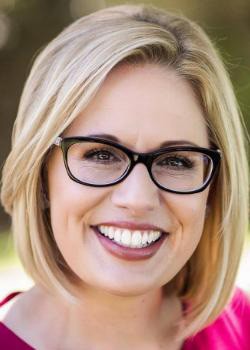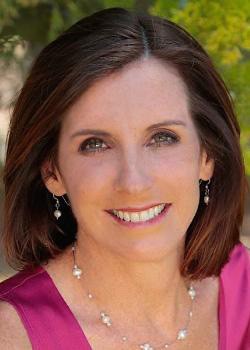Arizona has officially opened its 2018 midterm election campaign with a historic all-female Senate race between Democratic candidate Kyrsten Sinema and Republican candidate as well as Pima county’s own U.S. House Representative Martha McSally. Both candidates received their nominations handily, with Sinema taking over 80 percent of the primary vote and McSally emerging with 53 percent of the vote against runner-up Kelli Ward and the controversial sheriff Joe Arpaio, according to the New York Times.

McSally was able to beat out the two anti-establishment candidates by appealing to Arizonans as the most electable candidate who could face off against what many Republicans are worried could shape up to be a “blue wave” — especially in a state Donald Trump only won by 3.57 percent. The closeness of the election in 2016 compared to Mitt Romney in 2012 has inspired many to look at Arizona’s changing demographics to predict what 2018 will bring to our state government, especially when you consider that Romney carried Arizona by 9 percentage points and the late John McCain by 8.5 percent. The last election Democrats carried the state was in 1996, when President Clinton was able to beat out Bob Dole by only 2.22 percentage points, ending what has been otherwise an unwavering support for whoever the Republican party has fielded since 1952.
And while the politics in Arizona have been long static and reliably conservative, in the late 1980s the Democrat Rose Mofford made waves when she was elevated into the governor’s mansion after her predecessor was impeached for obstruction of justice and misuse of government funds. Her governorship would make Arizona one of three states that had a female governor at the time in the 1980s, and she would be followed by Jane Dee Hull, Janet Napolitano and Jan Brewer (all three of whom would serve back-to-back).
RELATED: McSally, Sinema, Ducey and Garcia win primaries after Aug. 28 voting
Arizona has had a very interesting and sometimes awkward relationship with its female legislators, as the Grand Canyon State has never had a woman represent it in the Senate in the 106 years it has been sending senators to Washington. Now that Martha McSally and Kyrsten Sinema have both won the nominations for their respective parties, it seems like that trend is about to finally reach its conclusion and will remove Arizona from the 21 other states that have never elected a woman to the Senate.
Apart from the Senate, Arizona has the distinction of the highest number of women to serve as governor in the entire country, at total of four serving for a combined 21 years. Arizona is also unique for having three separate women serve as governors consecutively from 1997 until Doug Ducey took office in 2015 . Additionally, The Arizona Republic reported back in 2017 that the Arizona State House and Senate were at all-time highs of female representation, saying that “Of the 30 state senators, 14 are women and, of the 60 state representatives, 22 are women”. This percentage has only been met by three other states (Colorado, Vermont and Washington) and only beaten by Colorado, which was at “42 percent in 2015 and 2016”.
But not everything in Arizona is as it seems. Despite boasting one of the most gender-balanced state legislatures in the nation, Arizona rejected attempts to even call a vote on the Equal Rights Amendment back in April, which would attempt to end gender discrimination in the state that WalletHub said ranked 47th in the nation for gender equality, with especially low rankings in both education and health.
If Arizona wants to lead the pack on gender equality in the country, we have to start pushing for ending the gap between the income of men and women and especially begin prioritizing education, not just at the college level, but also pre-kindergarten programs that encourage success and help students of both genders learn skills to advance further younger. According to Phoenix Stats, Arizona is the 18th lowest in percentage of 3-4 year olds enrolled in a state pre-kindergarten program at only 4.2 percent. If our state legislatures start investing more into its youth and students, Arizona will begin to feel real concrete change over the coming years towards greater gender equality.
Alec Scott is a junior studying political science and German studies who volunteered for the 2014 Ron Barber Congressional Campaign. Follow The Daily Wildcat on Twitter









